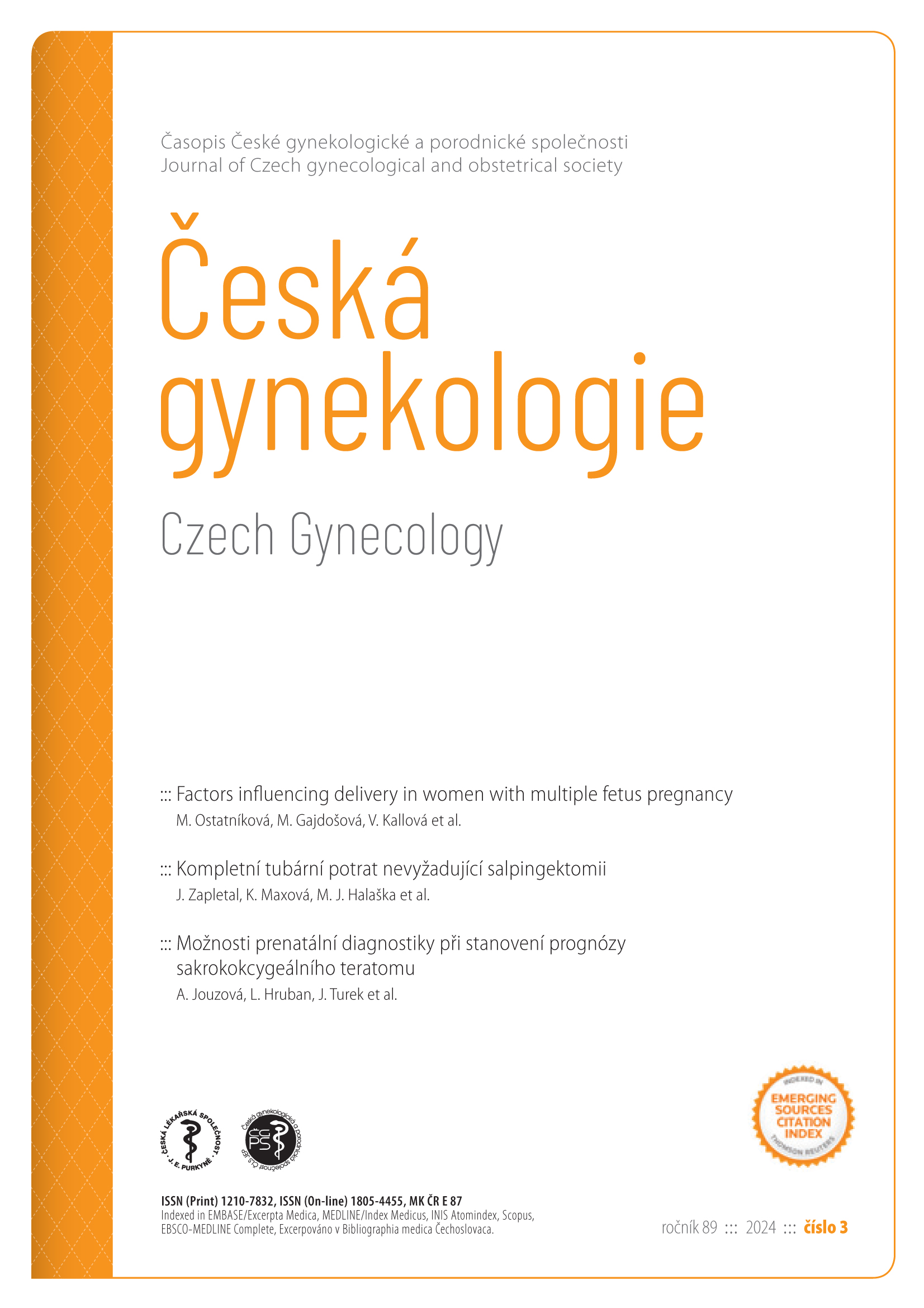Factors influencing delivery in women with multiple fetus pregnancy
Keywords:
twin pregnancy, IVF, vaginal delivery, caesarean section, newborn conditionAbstract
Objective: This paper aims to analyze the factors that can influence the method of childbirth in women with multiple pregnancies. Materials and methods: Retrospective analysis of selected parameters in women with multiple pregnancies who gave birth at the 2nd Clinic of Gynecology and Obstetrics of the Faculty of Medicine, Comenius University (FM CU) and University Hospital (UH) Bratislava over the years 2010‒2022. Results: Between 2010 and 2022, at the 2nd Clinic of Gynecology and Obstetrics of the FM CU and UH in Bratislava, 1.13% of births were multiple pregnancies. After statistical data processing, primiparity appeared statistically significant as a risk of acute caesarean section (C-section); multiparous women had a higher probability to give birth vaginally. Since 2017, the clinic has had a decreasing trend in the number of caesarean sections. Women with an acute caesarean section, in turn, had, on average, a lower pH of both fetuses compared to vaginal delivery. However, the incidence of asphyxial fetuses was not statistically significantly different. We found no risk factor increasing the likelihood of acute caesarean section for fetus B in twins. Conclusion: Multiple pregnancy has a higher morbidity not only for the woman but also for the fetuses. The incidence of multiple pregnancies is influenced by assisted reproduction. Delivery method depends on various factors such as chorionicity, fetal presentation, and history of previous caesarean section.


